Flood danger recedes across Pakistan, rehabilitation begins
NDMA forecasts rainfall in upper Indus, Kabul catchments, Rawalpindi, Islamabad
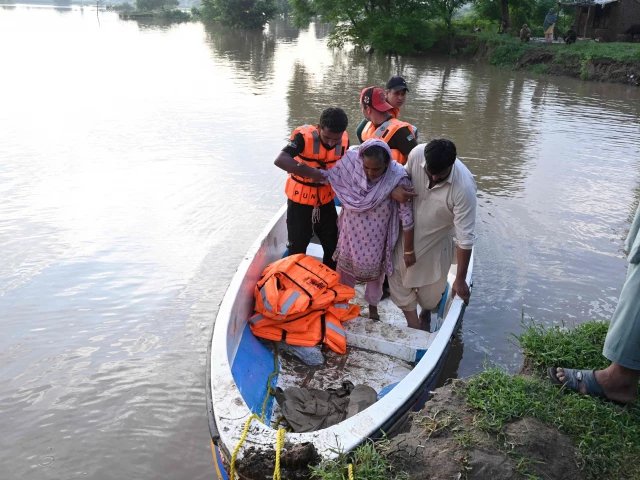
The flood threat across Pakistan has subsided, with conditions steadily improving, as National Disaster Management Authority reported, as relief and rehabilitation operations in the affected areas continue nationwide.
According to the Flood Forecasting Division (FFD), medium-level floods are only being observed in parts of lower Sindh, while the rest of the country has moved out of red alert.
“Flood threat across the country has ended and conditions are improving,” Federal Minister for Water Resources Moeen Wattoo said, adding that federal and provincial governments are working jointly on rehabilitation. He emphasized that restoring basic infrastructure in flood-affected regions remains the top priority.
Wattoo further noted that compensation measures for damaged agricultural land and crops are underway, while transparency and speed in the rehabilitation process would be ensured.
“Local administration and government will work together to restore facilities in affected areas,” he added. Further efforts on an effective flood management system are ongoing to reduce future losses.
Read: Flash floods cause Rs650m damage to Faisalabad irrigation infrastructure
Water levels stabilised
On the hydrological front, the Water and Power Development Authority (WAPDA) reported stable river flows and reservoir levels. At Tarbela, inflow in the Indus River stands at 92,100 cusecs with an outflow of 91,700 cusecs, while the water level in the reservoir is 1,550 ft, storing 5.728 million acre ft(MAF).
At Mangla, inflow in the Jhelum River is 17,100 cusecs with an outflow of 9,000 cusecs, and the reservoir holds 7.126 MAF at a level of 1,240.15 ft.
At Chashma Barrage, inflow is 138,300 cusecs with outflow at 132,200 cusecs, the reservoir contains 0.311 MAF at 649 ft.
At Head Marala, the Chenab River shows an inflow of 37,200 cusecs and an outflow of 24,800 cusecs. At Nowshera, inflow and outflow in the Kabul River both stand at 15,700 cusecs.
The combined usable water storage in Tarbela, Mangla, and Chashma reservoirs is 13.165 MAF. WAPDA clarified that inflow and outflow at Tarbela, Chashma, Nowshera, and Mangla are recorded as 24-hour averages, while figures for Head Marala and other points reflect conditions at 6:00 a.m. today.
In its latest update, the National Emergencies Operation Center (NEOC) reported that Kotri Barrage is currently witnessing a medium flood, with flows of around 400,000 cusecs. Authorities expect the flood situation at Kotri to persist until the end of September.
Meanwhile, flows at Guddu and Sukkur barrages are gradually receding, returning to normal levels. On the Ravi River, water levels are falling at Ganda Singh Wala, though low-level flooding continues at Sulemanki and Islam barrages.
National Disaster Management Authority (NDMA) cautioned that due to prevailing river flows, low-lying areas in certain regions remain at risk of inundation. The NEOC is closely monitoring the situation around the clock, with continuous updates being shared with relevant departments.
Also read: 1,006 perished, over 3m rescued in nationwide operations during floods: NDMA
NDMA has forecast rainfall over the next 24 hours in the upper catchment areas of the Indus and Kabul rivers, as well as in Rawalpindi and Islamabad.
The authority has advised the public to avoid unnecessary travel in vulnerable areas and refrain from attempting to cross floodwaters. It also urged people currently staying in relief camps to wait for official clearance before returning to their homes.
Relief operations continue
Punjab Chief Minister Maryam Nawaz has announced a comprehensive relief package for flood victims across the province, with the government emphasizing that all assistance will be financed through its own resources without external aid.
Provincial Information and Culture Minister Uzma Zahid Bukhari said the new package includes direct compensation for farmers, households, and livestock owners. Affected farmers will receive Rs20,000 per acre, while families whose homes were destroyed will be paid Rs1 million for complete loss and Rs500,000 for partial damage. Compensation of Rs500,000 has also been allocated for cattle losses.
According to official figures, the floods have impacted more than 4.7 million people, including 2.6 million directly and losses of over 2.1 million livestock. Around 27 districts and 4,794 villages along river belts have been affected, with over 2,213 rescue and relief teams deployed in the field.
Bukhari highlighted that the government is introducing Relief Cards to ensure that victims receive aid without waiting in long queues. She also said that under the Apni Chhat Apna Ghar program, 80,000 houses are currently under construction, with the number expected to reach 100,000 by December.
Commenting on broader issues, the provincial minister defended Pakistan’s security agreement with Saudi Arabia as a symbol of national dignity and condemned what she described as unfounded criticism. At the same time, she said the Punjab government is actively addressing environmental challenges, including smog, which she attributed partly to crop burning in Indian Punjab.
Read more: Pakistan floods batter fields, factories, fiscal plans
NDMA has directed the private sector and industrial institutions to channel assistance to the areas most in need, ensuring the continued provision of necessities with the support of humanitarian partners.
With floodwaters receding, the focus has shifted to rehabilitation and long-term resilience. Relief operations are progressing steadily, while structural measures, such as strengthening flood management systems, are being prioritized to reduce future risks.
Khyber-Pakhtunkhwa
France has announced financial support worth 500,000 euros for flood-affected people in Khyber-Pakhtunkhwa.
French Ambassador to Pakistan Nicolas Galey announced in Islamabad, stressing that the aid reflects “France’s solidarity with Pakistan at a time of heightened climate challenges, he added.

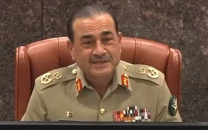

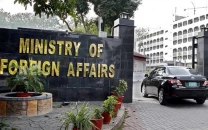




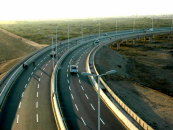
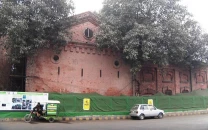









COMMENTS
Comments are moderated and generally will be posted if they are on-topic and not abusive.
For more information, please see our Comments FAQ